Table of Contents
Table of Contents
- Use of Ray Diagram
- Ray Diagram of a Point Object
- Ray Diagram of Any other Object
- Summary
- What’s Next?
In the previous segment, we learnt about the Image characteristics of a plane mirror. In this segment, let us understand ray diagrams involving a plane mirror.
Why are Ray diagrams used?
A ray diagram is drawn on paper to find the location of the image. It helps us to understand and verify the characteristics of these images.
Ray diagrams are used to illustrate the path of light rays as they travel through a given optical system. They are useful for understanding the behavior of light and how it is affected by lenses and mirrors, which are essential components of many optical systems.
Ray diagrams allow us to visualize how light behaves when it passes through an optical system. By tracing the path of a single light ray through a diagram, we can easily observe how it interacts with any lenses or mirrors that it comes into contact with. This helps us to identify how light will be reflected and refracted, allowing us to better understand how optical systems work.
Ray diagrams are also useful for making predictions about how light will behave in a particular system. By tracing the path of a ray through the system, we can determine the location of the image that will be produced, as well as any other properties of the light that will be affected by the optical components. This can be helpful in designing and constructing optical systems.
Finally, ray diagrams are used in the field of optics to teach students about the behavior of light. By providing visual representations of how light interacts with optical components, students can gain a better understanding of how optical systems work and how they can be used to manipulate light. This can provide an invaluable foundation for those interested in pursuing a career in optics.
In conclusion, ray diagrams are an essential tool for understanding the behavior of light and how it interacts with optical components. They are also useful for making predictions about how light will behave in a given system and for teaching students about optics.
How to draw a ray diagram of a point object in front of a plane mirror?
Consider a point object and a plane mirror as shown below:
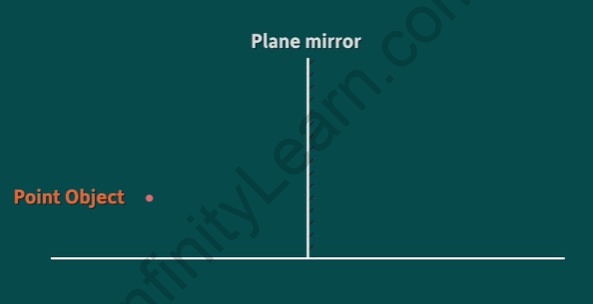
Point object and plane mirror
Two rays from the point object are needed to represent its image. The ray diagram of the point object can be drawn as follows:
Step 1: Draw any two rays emerging from the object and reflected by the mirror as shown below.
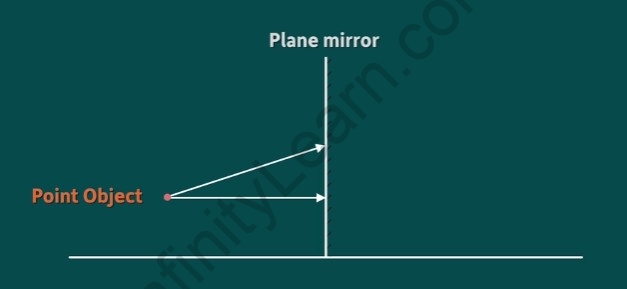
Incident rays from a point object
The reflected rays will follow the laws of reflection. The ray incident perpendicularly on the mirror will be reflected along the incident ray in the opposite direction.
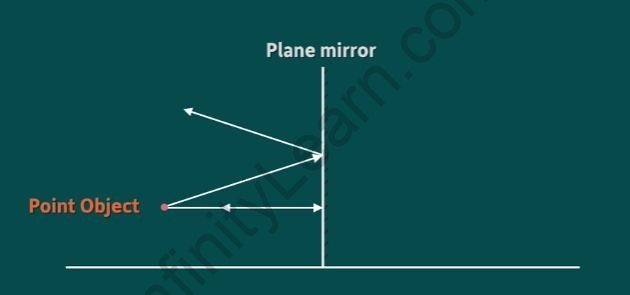
Reflected rays from a point object
Step 2: Trace the reflected ray backwards to meet each other behind the mirror. The point where these two rays meet is the image of the point object.
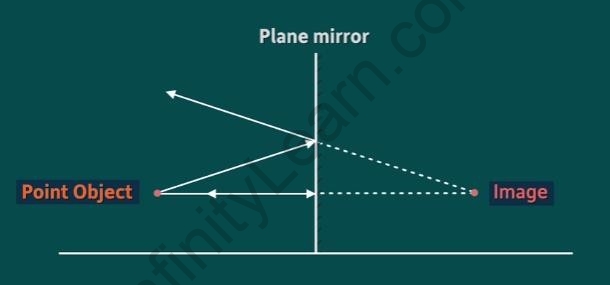
Image of a point object
This is the ray diagram of a point object.
How to draw the ray diagram of any other object in front of a plane mirror?
Step 1: Represent the object whose ray diagram is to be drawn using an arrow.
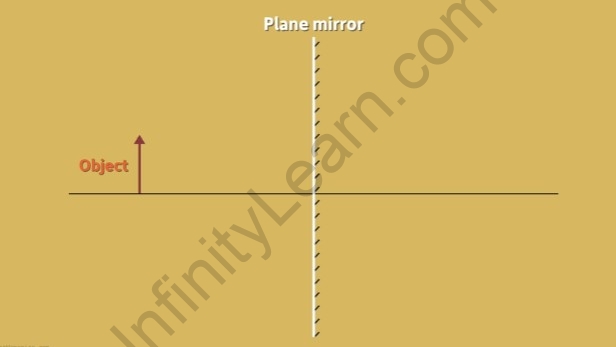
Object in front of a plane mirror
Step 2: Consider two points on the arrow, preferably the points on the top and bottom of the arrow, to draw the ray diagram.
Summary
Ray diagrams are used to illustrate how light reflects off a plane mirror. A plane mirror is a flat mirror that reflects light in a parallel fashion. When a ray of light strikes a plane mirror, it will reflect off the mirror at the same angle as the angle of incidence. This is known as the law of reflection. Ray diagrams can be used to analyze the behavior of light when it reflects off a plane mirror, and to determine the image formed by the mirror.









